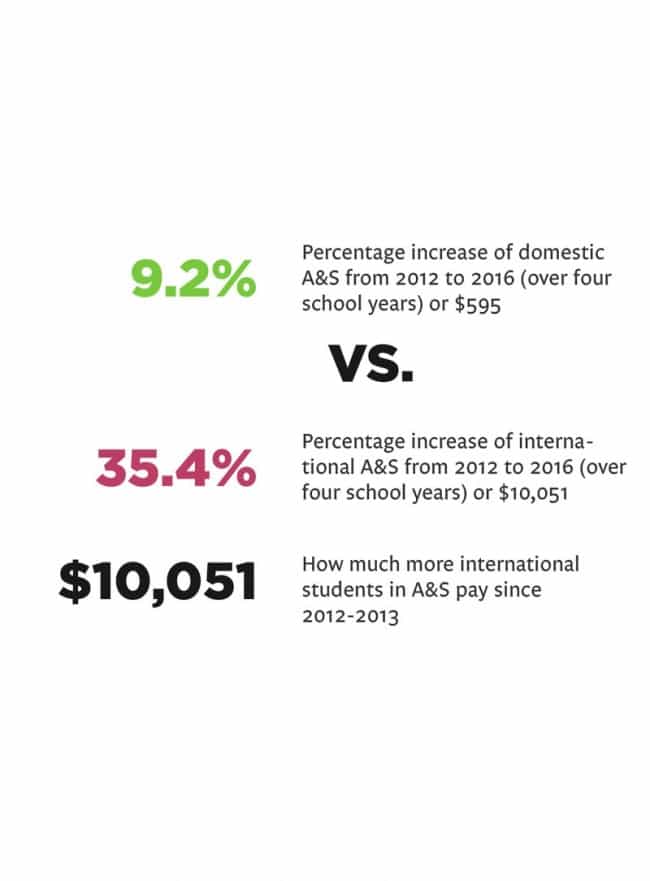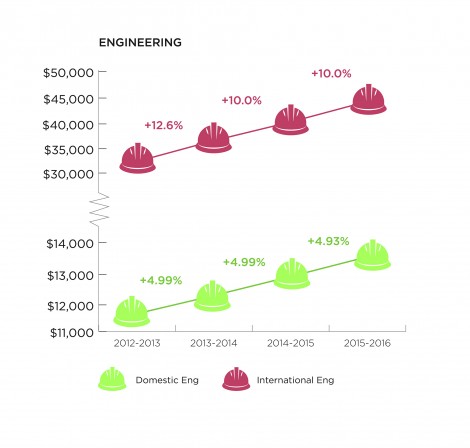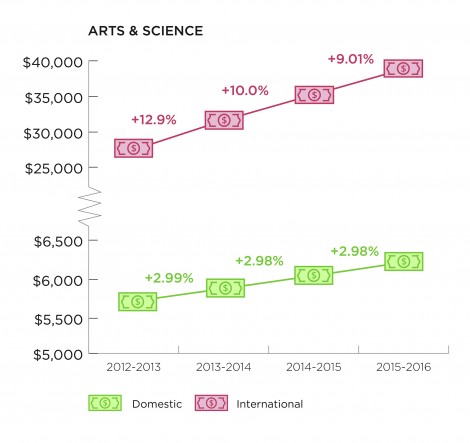Year after year, the story is the same: tuition fees are on the rise. These hikes affect both domestic and international students; however, international students pay higher tuition overall and often face higher tuition increases every year compared to their domestic peers. The figures shown below are only program fees, and do not include incidental or ancillary fees and residence fees.
These figures do not include deregulated fees charged in certain upper-year programs such as Bioinformatics, Computer Science, and Rotman Commerce.
RATES OF INCREASE
On top of having to pay much higher tuition, the rate at which international student fees rise is, on average, about three to four times more than that of domestic students. Let’s compare the rise in tuition fees of first-year students in Arts & Science with first-year students in Engineering.
International students will continue to be hit hardest; the Office of the vice-president and provost revealed that tuition fees for international students would continue to increase for the 2016–2017 school year.
As a result, newly admitted international students entering in the 2016–2017 academic year will pay over 47 per cent more than newly admitted international students who entered in September 2012.
* The Faculty of Arts and Sciences referenced is composed of the Faculties of Arts and Sciences at all three campuses. UTM charges on a per-course basis, UTSC charges on a per-course per-semester basis, and UTSG charges a flat full-time program fee. For UTM and UTSC, the figures shown are a student’s tuition if they are taking 5.0 full course equivalents.




